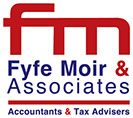Who does this affect?
- Unincorporated businesses (sole-traders, partnerships, and limited liability partnerships) whose accounts year does not end between 31st March and 5th
What is the present position?
- For a particular tax year, you are normally taxed on the net profit per the accounts which end in that tax year.
Example of the Present Position
- Tom has been self-employed for several years and draws up accounts to 30th April each year.
- His accounts to 30th April 2022 show net profit of £30,000. That is taxable in the 2022/23 tax year.
What may change?
- The Government intend that all self-employed will pay tax and national insurance based upon net profit aligned to the tax year itself and not the accounting year end.
Do I have to move my accounting date?
- No, you can retain your present accounting year end if you want.
- However, if the change comes into effect, for tax purposes, you will need to report your self-employed income and expenditure incurred based upon the tax year and not your accounting year end.
When may this change happen?
- This will come into effect for the 2023/24 tax year (i.e. from 6 April 2023).
- This would be known as the transitional tax year where you are moving away from the old rules to the new ones.
- So that the tax hit is not ridiculously high in the 2023/24 tax year, there will be special transitional rules to spread the additional tax burden over 5 tax years.
Why could this happen?
- Making Tax Digital for Income Tax for sole trades and property landlords, with a turnover in excess of £10K, starts in April 2024 and for general partnerships from April 2025.
- Under Making Tax Digital, you will be expected to keep digital business records and submit digital reports on a quarterly basis to HM Revenue & Customs regarding your business income and expenditure.
- The intention is for all self-employed to be taxed in the same way by April 2024 in time for it to align with the Making Tax Digital quarterly reporting dates.
In what way could this change affect me?
- If your self-employment profits are rising, you could find yourself with a significant increase in your tax bill, above and beyond what you would normally expect to pay, in January 2025 and also July 2025.
- You may have ‘overlap relief’ which could help mitigate this tax problem.
What is ‘overlap relief’?
- This can occur when you have an accounting date ending other than between 31st March and 5th
- It usually arises at the time when you first commence self-employment, resulting in the same profit being taxed twice, once in the first tax year and again in the second tax year of trading.
- The profit which is taxed twice is then noted as ‘overlap relief’.
- Overlap relief can be carried forward and, in this case, reduce your net profit, for tax purposes, when looking at your 2023/24 tax year position.
- The overlap relief is likely to be quite small as profits in the early years of self-employment are usually low.
Here is an example of the potential impact
- Mary has been self-employed for many years and draws up accounts to 30th April
- Her profits for the account’s year ended 30th April 2023 are £55,000
- Her profits for the account’s year ended 30th April 2024 are £66,000
- Mary’s overlap relief brought forward is £20,000.
- Mary is single and has no other income.
- The profits for the 2023/24 tax year are as follows;
- Accounts year ended 30th April 2023 £55,000 plus
- Transitional element – 1st May 2023 to 5 April 2024 – £66,000 x 11/12 = £60,500 less Overlap relief (£20,000) = £40,500
- hose profits, which under current rules would not normally be taxed in 2023/24) = £40,500
- Under the transitional rules, it is proposed that the excess profit of £40,500 is spread equally over 5 tax years, starting with the 2023/24 tax year – £40,500/5 years = £8,100.
- The minimum taxable profit in 2023/24 is £55,000 + £8,100 = £63,100
- Assuming tax and national insurance rates stay as they are, Mary’s 2023/24 tax and national insurance bill moves from £13,725 (£15,323 Scotland) under the present rules, to £17,228 (£18,907 Scotland) under the proposed new rules. Nearly a 26% increase (29% Scotland)!!
What should I do?
- Contact us to see if this proposed change may affect you and to consider whether it is worthwhile, or not, to align your accounts to the tax year.
- Put together a projection of forthcoming profits with your us to estimate the impact. Monitor that projection going forward.
- Set aside sufficient funds to meet the January/July 2025 liability.
- Submit your records to us as soon as possible after 5th April 2024 so that you can obtain an accurate picture of your liability early.
- Look to see whether any planning may mitigate the liability, for example:
- Bring a family member into the business.
- Invest in more plant and machinery.
- Incorporate the business.
- Put more money into your pension scheme.
- Check with us that you are properly prepared for Making Tax Digital for Income tax which starts as early as April 2024.
How can we help?
- Please do not hesitate to contact us and we can carry out a review for you to see the potential impact if any these changes may bring.
